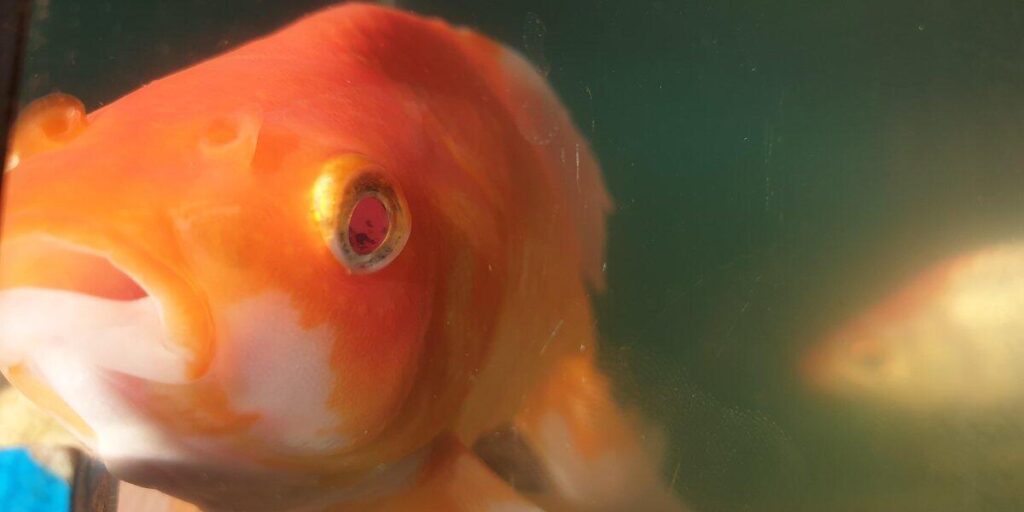Discover the fascinating world of goldfish blind in our latest article. Learn about causes, symptoms, and care tips for visually impaired goldfish.

Goldfish are wonderful aquatic companions that bring joy to countless households around the world. Their enchanting presence can be even more heartwarming when they face adversity, such as blindness. While it might sound daunting to care for a blind goldfish, with the right knowledge and a few adjustments, it’s a task that can be managed effectively.
In this guide, we’ll delve into the world of blind goldfish care. We’ll discuss how to identify if your goldfish is blind, explore the common causes of blindness in these aquatic pets, and provide valuable insights into their care and well-being. Whether you’re already the proud owner of a blind goldfish or are considering adopting one, this article is your go-to resource for ensuring their happiness and health.
Identifying Blindness in Goldfish
Before diving into the specifics of caring for a blind goldfish, it’s essential to determine whether your fish has indeed lost its sight. Some common signs of blindness in goldfish include:
- Erratic swimming: Blind goldfish may swim in a disoriented or erratic manner, often bumping into objects or tank walls.
- Lack of reaction: They might not respond to visual cues, such as your hand approaching the tank or the presence of other fish.
- Difficulty finding food: Blind goldfish may struggle to locate and eat food, which can lead to weight loss and malnutrition.
- Abnormal behavior: Look for unusual behaviors like staying near the water’s surface or hovering at the bottom of the tank for extended periods.
If you observe these signs in your goldfish, it’s time to shift your focus to providing the appropriate care they need.
Causes of Blindness in Goldfish
Understanding why your goldfish has become blind is crucial for effective care. Several factors can contribute to blindness in goldfish, including:
- Genetics: Some goldfish breeds are more prone to genetic eye conditions that can lead to blindness.
- Infections: Bacterial or fungal infections, if left untreated, can damage the eyes and result in blindness.
- Poor water quality: Ammonia and nitrite spikes, as well as high levels of dissolved waste, can harm a goldfish’s eyes over time.
- Trauma: Injuries from sharp tank decorations or aggressive tankmates can lead to blindness.
- Aging: As goldfish age, their eyesight naturally deteriorates.
Now that you have a better understanding of the causes, let’s move on to the essential aspects of caring for your blind goldfish.
Caring for a Blind Goldfish
Tank Setup and Design
Creating a safe and comfortable environment is paramount when caring for a blind goldfish. Here are some tips for setting up the perfect tank:
- Minimize obstacles: Remove sharp or abrasive decorations that could injure your goldfish.
- Smooth substrate: Opt for smooth gravel or sand at the bottom of the tank to prevent injury to their delicate barbels.
- Adequate space: Ensure your tank is appropriately sized, providing ample swimming room for your goldfish.
- Consistency: Avoid rearranging decorations frequently to help your goldfish navigate their environment more easily.
Feeding a Blind Goldfish
Feeding a blind goldfish requires special attention. Here’s how to ensure they receive proper nutrition:
- Hand-feeding: Gently place the food near your goldfish and guide them to it using a small feeding stick or your fingers.
- Specialized foods: Consider sinking pellets or gel foods that are easier for blind goldfish to locate.
- Maintain a feeding routine: Stick to a consistent feeding schedule to help your goldfish anticipate mealtime.
- Monitor food consumption: Ensure your goldfish is eating regularly and adjust portion sizes accordingly.
Tankmates and Compatibility
Choosing suitable tankmates for your blind goldfish is essential to prevent stress and aggression. Opt for peaceful companions that won’t compete aggressively for food. Some compatible tankmates include other goldfish of similar size, small loaches, or peaceful bottom-dwelling fish like Corydoras.
Preventing Blindness in Goldfish
While caring for a blind goldfish is a rewarding experience, prevention is always better than cure. To reduce the risk of blindness in your goldfish, follow these guidelines:
- Maintain water quality: Regularly test and maintain your tank’s water parameters to ensure optimal conditions for your fish.
- Quarantine new fish: Isolate new additions to your tank in a separate quarantine tank to prevent the introduction of diseases.
- Avoid overcrowding: Ensure your tank is not overstocked to minimize stress and aggression.
- Regular health checks: Monitor your goldfish for any signs of illness or injury and seek prompt veterinary care when necessary.
You May Also Like:
- Is Silicone Sealant Toxic To Fish (Best Benefits & Types)
- Accidentally Ingested Aquarium Water? (Cons & Effects)
- What Does Good Bacteria Look Like In A Fish Tank? Best 8 Benefits
Conclusion
Caring for a blind goldfish can be a rewarding experience that deepens your connection with these fascinating aquatic pets. By identifying blindness, understanding its causes, and implementing the right care strategies, you can provide a fulfilling life for your goldfish despite their visual impairment.
Remember that patience and empathy are key when tending to a blind goldfish. With your dedication and the insights shared in this guide, your goldfish will thrive, and you’ll enjoy the continued companionship of this resilient and beloved aquatic friend.
